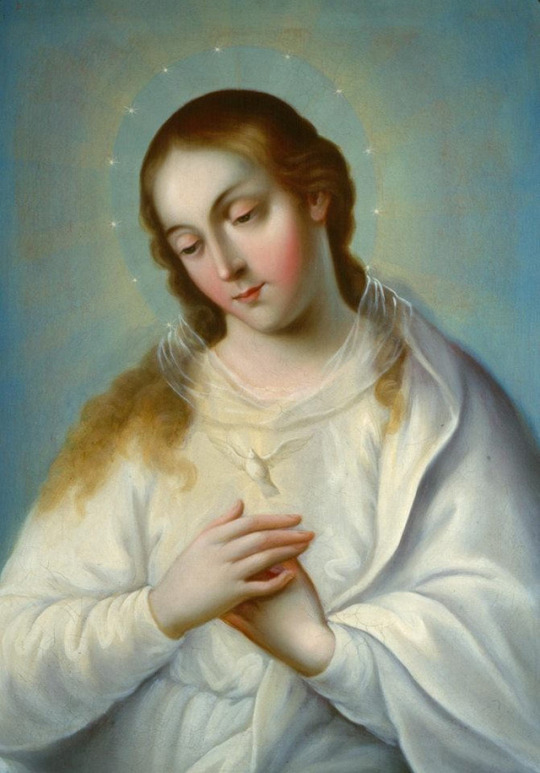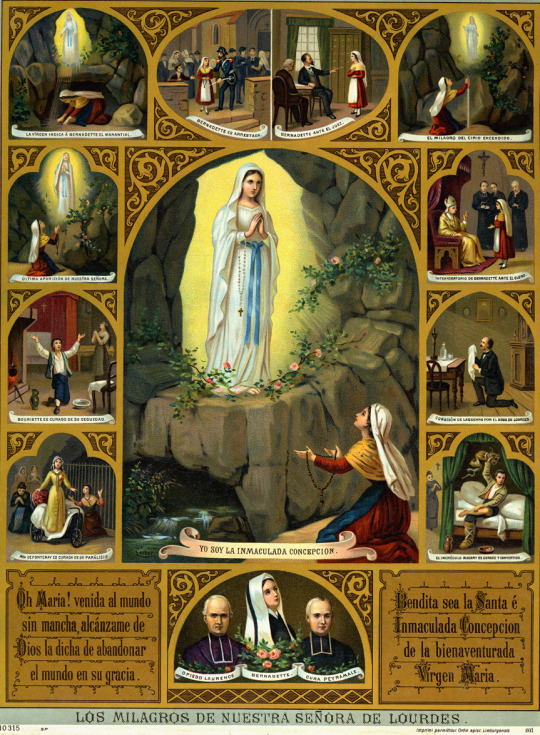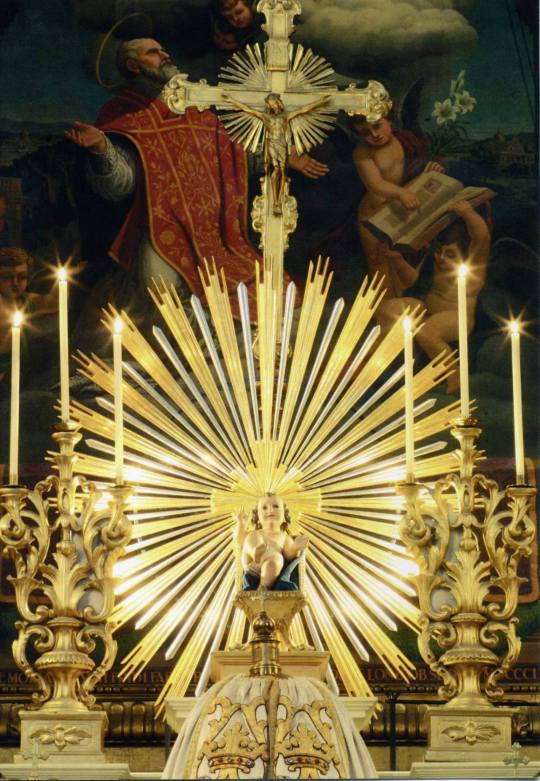Photo








“Rothschild Canticles”, turn of the 14th century
”An intensely illustrated florilegium of meditations and prayers drawing from Song of Songs and Augustine’s De Trinitate, among other texts, the Rothschild Canticles is remarkable for its full-page miniatures, historiated initials, and drawings, which show the work of multiple artists.”
Source
5K notes
·
View notes
Photo

The Triumph of the Eucharist Above the Rising Sun, Italian School
682 notes
·
View notes
Photo
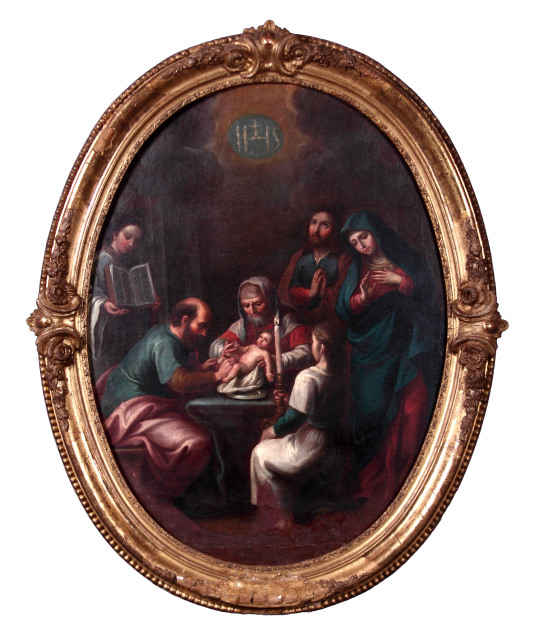
La circuncisión
Miguel Cabrera
Zacatecas, México
40 notes
·
View notes
Photo
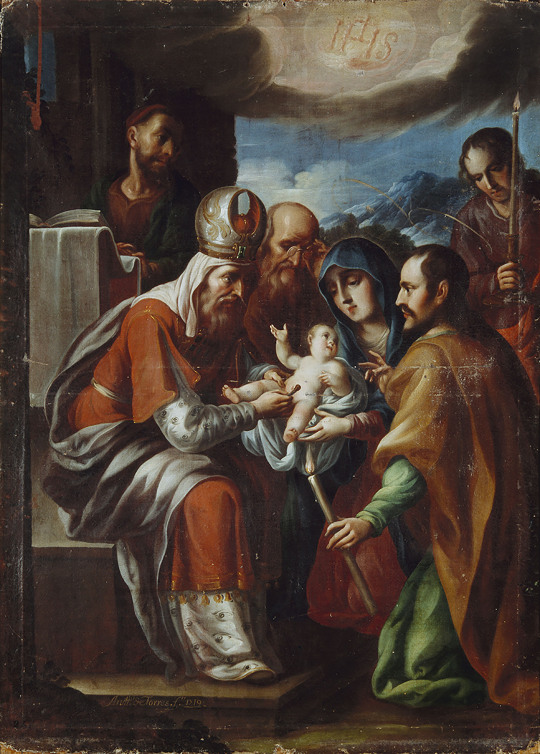
La circuncisión
Antonio de Torres
1719 A. D.
69 notes
·
View notes
Text
“Our newborn King and Saviour is eight days old today; the Star that guides the Magi is advancing towards Bethlehem, and five days hence will be standing over the Stable where our Jesus is being nursed by his Mother. To-day the Son of Man is to be circumcised; this first sacrifice of his innocent Flesh must honour the eighth day of his mortal life. Today also a Name is to be given him: the Name will be Jesus, and it means Saviour. So that mysteries abound on this day: let us not pass one of them over, but honour them with all possible devotion and love. But this day is not exclusively devoted to the Circumcision of Jesus. The mystery of this Circumcision forms part of that other great mystery, the Incarnation and Infancy of our Saviour - a mystery on which the Church fixes her heart not only during this Octave, but during the whole forty days of Christmastide. Then, as regards our Lord’s receiving the Name of Jesus, a special Feast, which we shall soon be keeping, is set apart in honour of it. There is another object that shares the love and devotion of the Faithful on this great Solemnity. This object is Mary, the Mother of God. The Church celebrates to-day the august prerogative of this divine Maternity which was conferred on a mere creature, and made her the co-operatrix with Jesus in the great work of man’s salvation… But it is today that we, the children of the Roman Church, must pour forth all the love of our hearts for the Virgin-Mother, and rejoice with her in the exceeding happiness she feels at having given birth to her and our Lord. During Advent we contemplated her as pregnant with the world’s salvation; we proclaimed the glory of that Ark of the New Covenant, whose chaste womb was the earthly paradise chosen by the King of Ages for his dwelling-place. Now she has brought him forth, the Infant-God; she adores him, him who is her Son. She has the right to call him her Child; and he, God as he is, calls her in strictest truth his Mother.”
— Dom Prosper Guéranger, O.S.B., The Liturgical Year, January 1st
11 notes
·
View notes
Photo
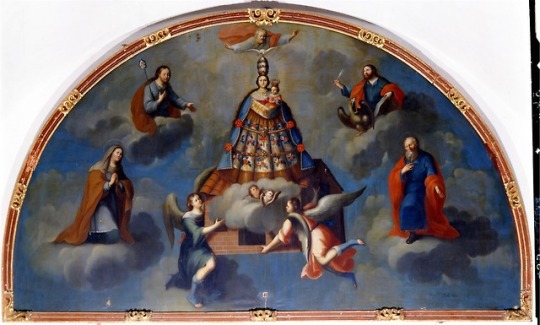
Traslado de la casa de Loreto. Padilla, José. XVIIIth Century.
29 notes
·
View notes
Quote
The Archangel proclaims her Full of Grace. What means this, but that the second Woman possesses in herself that element of which sin had deprived the first? And observe, he does not say merely that divine grace works in her, but that she is full of it. “She is not merely in grace as others are,” as Saint Peter Chrysologus told us on his feast, “but she is filled with it.” Everything in Her is resplendent with heavenly purity, and sin has never cast its shadow on her beauty. To appreciate the full import of Gabriel’s expression, we must consider what is the force of the words in the language which the sacred historian used. Grammarians tell us, that the single word which he employs (kecharitomene) is much more comprehensive than our expression “full of grace.” It implies not only the present time, but the past as well, - an incorporation of grace from the very commencement, - the full and complete affirmation of grace, - the total permanence of grace. Our translation has unavoidably weakened the term.
The better to feel the full force of our translation, let us compare this with an analogous text from the Gospel of St. John. This Evangelist, speaking of the Humanity of the Incarnate Word, expresses all by saying, that Jesus is full of grace and truth [St. John, i. 14]. Now, would this fullness have been real, had sin ever been there, instead of grace, even for a single instant? Could we call him full of grace, who had once stood in need of being cleansed? Undoubtedly, we must ever respectfully bear in mind the distance between the Humanity of the Incarnate Word and the person of Mary, from whose womb the Son of God assumed that Humanity; but the sacred text obliges us to confess, that the fullness of grace was, proportionately, in both Jesus and Mary.
The Liturgical Year by Dom Prosper Gueranger, O.S.B.
(via servus-immaculatae)
41 notes
·
View notes
Photo

Alegoría de la Inmaculada Concepción como fuente de vida. López, Andrés. 1786 A. D..
129 notes
·
View notes
Photo

S. Nicola distrugge gli Idoli pagani, Monastero di Esphigmenou
59 notes
·
View notes
Photo
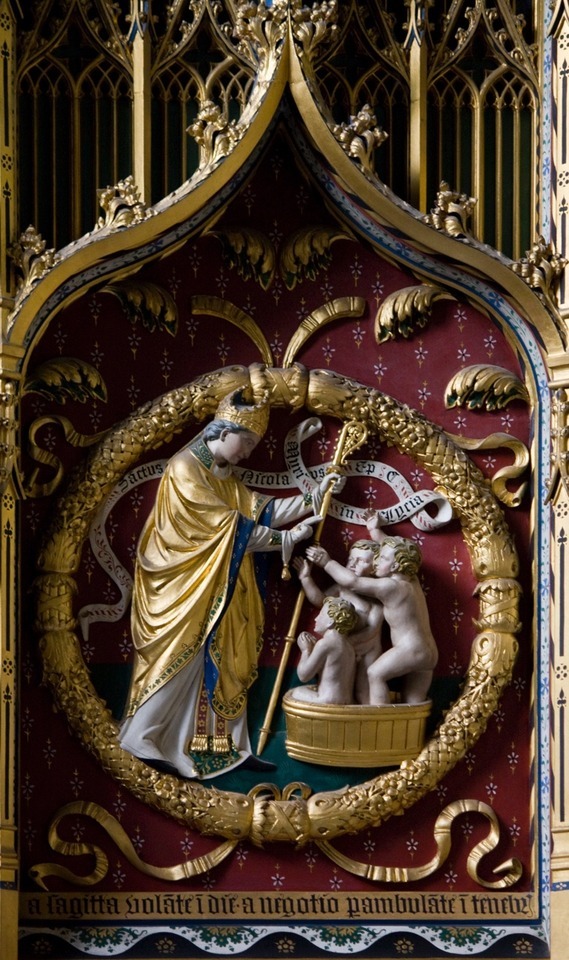
Saint Nicholas raising three boys from the dead - Ninian Comper
177 notes
·
View notes
Photo
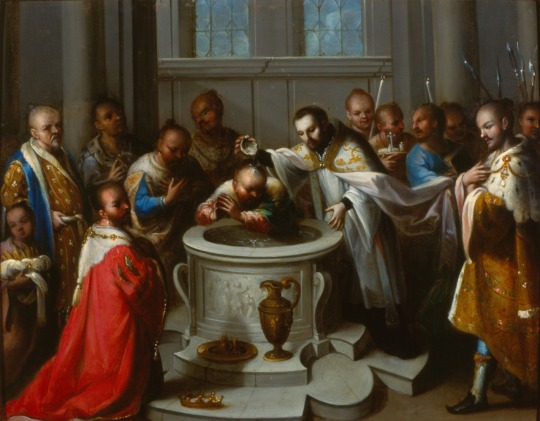
The Baptism of Infidels by St. Francis Xavier, Anonymous, Museo Nacional de Arte de la Ciudad de México
46 notes
·
View notes
Photo

San Francisco Javier
Anonymous Peruvian
A. D. XVIIth century
134 notes
·
View notes
Text
‘There are three comings of our Lord; the first in the flesh, the second in the soul, the third at the judgement. The first was at midnight, according to those words of the Gospel: At midnight there was a cry made, Lo the Bridegroom cometh! But this first coming is long since past, for Christ has been seen on the earth and has conversed among men. We are now in the second coming, provided only we are such as that He may thus come to us; for He has said that if we love him, He will come unto us and will take up His abode with us. So that this second coming is full of uncertainty to us; for who, save the Spirit of God, knows them that are of God? They that are raised out of themselves by the desire of heavenly things, know indeed when He comes; but whence He cometh, or whither He goeth, they know not. As for the third coming, it is most certain that it will be, most uncertain when it will be; for nothing is more sure than death, and nothing less sure than the hour of death. When they shall say, peace and security, says the apostle, then shall sudden destruction come upon them, as the pains upon her that is with child, and they shall not escape. So that the first coming was humble and hidden, the second is mysterious and full of love, the third will be majestic and terrible. In His first coming, Christ was judged by men unjustly; in His second, He renders us just by His grace; in His third, He will judge all things with justice. In His first, a lamb; in His last, a lion; in the one between the two, the tenderest of friends.’
[Peter of Blois, De Adventu, Sermon III.]
11 notes
·
View notes
Photo

Plate with the Arming of David, 629–630, Metropolitan Museum of Art: Medieval Art
Gift of J. Pierpont Morgan, 1917
Size: Overall: 10 ½ x 1 9/16 in., 49.3oz. (26.6 x 4 cm, 1397g) foot: 4 9/16 x 9/16 in. (11.6 x 1.4 cm)
Medium: Silver
https://www.metmuseum.org/art/collection/search/464380
19 notes
·
View notes
